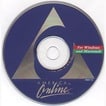This is a re-post of an article I wrote on the GoGrid blog.
 Clouds are sexy right now. In this article, I tracked how “Cloud Computing” is becoming a hot, up and coming Google Search term. But why is it that there are so many new user communities that are conglomerating around “the cloud” versus other more traditional hosting concepts. I would say because of the social environment where this technology is emerging.
Clouds are sexy right now. In this article, I tracked how “Cloud Computing” is becoming a hot, up and coming Google Search term. But why is it that there are so many new user communities that are conglomerating around “the cloud” versus other more traditional hosting concepts. I would say because of the social environment where this technology is emerging.
Asking the Question
Where does one learn about technology trends? How does one test it out or know if it is a match for your offering?
[poll id=”7″]
Traditional Hosting in the 90’s
The early 90’s were marked with the presence of AOL being the primary way that users got on the World Wide Web (now just called the Internet because people are using far more than just HTTP for content delivery). AOL  brought a new sense of community and an easy way to “get online.” As AOL tried to continue its monolithic domination of online access, other companies started popping up offering alternatives to advertising-heavy AOL within metropolitan markets. Companies like Netcom, CompuServe and AT&T became notable AOL dial-up competitors.
brought a new sense of community and an easy way to “get online.” As AOL tried to continue its monolithic domination of online access, other companies started popping up offering alternatives to advertising-heavy AOL within metropolitan markets. Companies like Netcom, CompuServe and AT&T became notable AOL dial-up competitors.
As dial-up companies became more mainstream, they had to compete against the daily CD-ROM mailers congesting the traditional direct marketing channels. Advertising and PR among traditional hosting providers ranged from print ads to directory listing services like Yahoo!. Also, dial-up service was the main method of getting on the WWW. When people wanted to find dial-up providers, one’s choices were pretty limited, either go with a large “closed” community like AOL or national or local dial-up provider. As dial-ups expanded, the ISPs began to offer hosting packages as well. As hosting slowly became more mainstream and competition started heating up, perspective clients had to hunt around to find reviews or opinions of these providers, frequently leaving more confused than not. In the end, word-of-mouth played a huge part in the final decision as well as simple bulletin boards were the place where a majority of end users did their research. Communities were there but frequently closed or hard to find.
“In-between” Hosting of Dot-Com
Step forward to the end of the 1990’s and we saw an even more cluttered landscape. Traditional hosting provides still existed. Managed hosting was becoming mainstream and the Dot-com era was upon us. Suddenly, anyone could make a “business” on the web and have vast quantities of money thrown at them, even without having a solid business plan. Companies, like WebVan, spent huge amounts of money on portions of their  business that really had little impact to their bottom line. Actually, the Sub-Zero refrigerators and $800 Herman Miller chairs that were purchased eventually helped to de-value the company rather than help it in any way. Dot-coms were all about making as big of a splash as possible, gaining brand visibility at all costs possible, and not looking back to check spending.
business that really had little impact to their bottom line. Actually, the Sub-Zero refrigerators and $800 Herman Miller chairs that were purchased eventually helped to de-value the company rather than help it in any way. Dot-coms were all about making as big of a splash as possible, gaining brand visibility at all costs possible, and not looking back to check spending.
Nobody seemed to care about IT spending. It just happened along with the IPOs and Venture Capitalist dolling money out like it was going out of style. It was very hard for a company to rise above the fold without these capital expenditures. Companies planned on becoming the next big thing and invested heavily in data centers and computer infrastructure. Hosting providers simply rode the wave. The people talking during this time were the CEO’s, Executives, Investment Bankers and Venture Capitalists; all the rest (of us) just held on tight to our thousands of stock-options, hoping that we would be the next multi-millionaire on the block, and worked 15 hour days without coming up for air. The decisions were made by those with the money.
Then it all burst.
Web 2.0 and “Evolved” Hosting
As the shrapnel fell from the Dot-Com bomb, companies were forced to re-group, re-engineer and re-architect. Everybody knew that the Internet was here to stay as a viable marketing channel, but also as a business marketplace. Companies who survived the bust, continued to limp along while others sat back to watch what would happen. Then began Web 2.0, emerging from the ruins as a completely different beast. Gone were the days of money being thrown around haphazardly and business decisions made on a whim. Companies now had to be self-funded, with a proven business model and an established user base.
The commonality during this and previous times was that all business needed places to host their products. What had changed were the ways to host and the cost associated with hosting. Traditional hosting providers  continued to cut their costs while adding more and more services. 1and1.com, for example, entered the US market in 2003. They broke into the US market softly and then started taking out huge, multi-paged spreads in traditional, even main-stream, print publications. This is just one example of how hosting was becoming even more mainstream and less reserved for the technologist.
continued to cut their costs while adding more and more services. 1and1.com, for example, entered the US market in 2003. They broke into the US market softly and then started taking out huge, multi-paged spreads in traditional, even main-stream, print publications. This is just one example of how hosting was becoming even more mainstream and less reserved for the technologist.
This sudden influx of cheap and available hosting helped to foster the emergence of new Web 2.0 companies and services. But as technology continued to better itself exponentially, hosting alternatives to the traditional began to be more prevalent. Virtualization was an important catalyst to this, allowing servers to be used differently, more efficiently and more broadly. Hosting providers started carving out services with Virtual Private Servers (VPS’s) as well as offering a full gamut of dedicated servers at increasingly competitive rates.
Web 2.0 companies now had a choice: traditional, dedicated, shared and in-house hosting, each offering advantages and disadvantages. But that wasn’t enough.
Social Media and the Cloud Community
So why is “Cloud Computing” suddenly so hot? I would say that it is not due to the technology alone, but rather because of the new super-social community driving it. The people making Web 2.0 what it is today are connected in so many different ways than before. Communication has evolved from bulletin boards to instant communities and relationships through services like Twitter, Del.icio.us, StumbleUpon, Digg, Technorati, MyBlogLog, FriendFeed, Facebook and podcasts, to name just a few. Couple these social communication tools with online publications like TechCrunch or Mashable who cover emerging companies and trends, and communities start flooding the market.
These communities aren’t just connected, they are talking with fervor and passion. Creating a community takes a fraction of the amount of time than in the past. Look at the Cloud Computing Google Group, for example. This group did not have any messages or members back in March 2008, as of mid-June, there are over 1000 members and the group discussions are growing exponentially. People simply want to talk about these new technologies and understand how they can provide a competitive advantage to their own business.
Communities are driving the clouds. Web 2.0ers talk at meetups, on Twitter, at conferences and directly among each other. They are looking for the best technological match for their offerings and the best price to do so. To touch on the price issue, this is a paradigm shift from the Dot-com era of free spending. Startups are bootstrapped and given the state of the “recessive” economy, so are larger companies and enterprises. So as the features of cloud computing are attracting technologists and developers, the pay-as-you-go or utility pricing models are attracting CFO’s and budget-minded IT managers.
 So why the heavy adoption of products like Cloud Hosting products like GoGrid or Amazon’s EC2 within the Web 2.0 community? It’s because of social media professing the advantages, the new pricing models and possible uses of this technology. Any Web 2.0 company that I talk to I ask the question, “what are you built on?” This is a pretty open-ended question which could be answered by the software powering a service or the technology behind it. Traditional hosting is not sexy, Cloud Computing and Hosting is. If a Web 2.0er is using the newest technology to drive their business, they epitomize this new generation as well as potentially show sound technical and financial business decisions.
So why the heavy adoption of products like Cloud Hosting products like GoGrid or Amazon’s EC2 within the Web 2.0 community? It’s because of social media professing the advantages, the new pricing models and possible uses of this technology. Any Web 2.0 company that I talk to I ask the question, “what are you built on?” This is a pretty open-ended question which could be answered by the software powering a service or the technology behind it. Traditional hosting is not sexy, Cloud Computing and Hosting is. If a Web 2.0er is using the newest technology to drive their business, they epitomize this new generation as well as potentially show sound technical and financial business decisions.
HTD says: Keep the Cloud talks going, it’s the technology driving Web 2.0 and Social Media.


6 comments
Adam
Sorry for adding another comment…I published too soon…I am a little confused about the definition of "cloud computing"…does it mean using web based technology to do work?
Adam
Sorry for adding another comment…I published too soon…I am a little confused about the definition of "cloud computing"…does it mean using web based technology to do work?
hightechdad
Haha. It was when I wrote the article. It's probably Web 2.5 now.
hightechdad
Haha. It was when I wrote the article. It's probably Web 2.5 now.
Adam
Is Web2.0 still an acceptable term?
Adam
Is Web2.0 still an acceptable term?